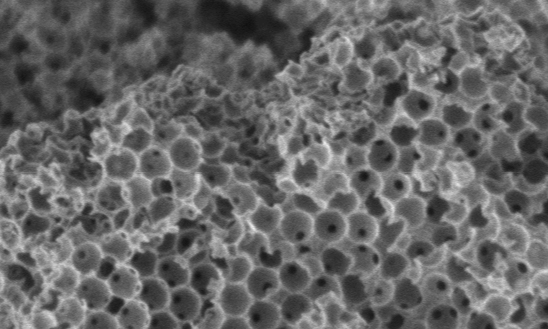An international team of scientists led by RMIT University, has developed a cost-effective method of turning recycled cooking oil, plastic refuse and agricultural waste into eco-friendly biofuels.
The researchers’ process is based around a novel catalyst, that’s capable of converting highly-contaminated materials into chemical precursors. In addition to creating low-carbon fuel sources, the chemical by-products could be used to produce various medicines and fertilisers as well as biodegradable packaging.
In order to rapidly scale their process, the team now intends to adopt 3D printing technologies, and identify potential partners to commercialize their catalysts with.
“Our new catalysts can help us get the full value of resources that would ordinarily go to waste,” explained the project’s co-lead investigator, Professor Adam Lee. “From rancid used cooking oil, to rice husks and vegetable peelings, [our catalyst] can advance the circular economy.”

Turning vegetable peels into energy sources
It’s no secret that the natural chemicals found in food and polymer-based waste can be turned into renewable energy sources. As the world turns towards more eco-friendly fuels, a number of scientists have already managed to turn products ranging from used cooking oil to manure, into usable recyclable biofuels.
The problem with many of these existing approaches, is that the natural resources on which they’re based, can’t be processed efficiently enough to make them a viable alternative to conventional fuels. At present, creating the complex organic molecules needed to make biofuels, involves synthesising them from smaller building blocks via multistep reactions.
Being able to perform multiple transformations within this fuel manufacturing process could be highly-beneficial, as reducing the total number of cycles required, would accelerate the entire process. What’s more, according to Professor Lee, current biofuel production methods are damaging to the environment, necessitating the need for a new technique.
“The quality of modern life is critically dependent on complex organic molecules to maintain our health and provide nutritious food, clean water and cheap energy,” said Lee. “These molecules are currently produced through unsustainable chemical processes that pollute the atmosphere, soil and waterways.”

The team’s novel biofuel catalyst and 3D printing
In order to reduce the number of manipulations required to manufacture biofuel, the researchers developed a new ultra-efficient catalyst. The team’s micron-sized sponge-like creation, works by absorbing molecules through its large external pores, and subjecting them to an initial chemical reaction.
When the natural molecules pass through the catalyst’s smaller internal pores, they undergo a second reaction, which enables multiple molecules to be processed within a singular catalyst. Co-lead investigator Professor Karen Wilson, explains that the team’s new design mimicked the way enzymes worked within human cells.
“Catalysts have previously been developed, but these approaches offer little control over the chemistry and tend to be inefficient and unpredictable,” said Wilson. “Our bio-inspired approach looks to nature’s catalysts – enzymes – to develop a powerful and precise way of performing multiple reactions in a set sequence.”
“It’s like having a nanoscale production line for chemical reactions – all housed in one, tiny and super-efficient catalyst particle.”
The spongy catalysts don’t contain any metals either, and all that’s required to create them is a large heated container, making them relatively inexpensive to produce. As a result, the team’s low-tech biofuel production process could be adopted in third-world countries, where facilities are at a premium and ‘energy poverty’ is rising.
With further research, the scientists also believe that their catalyst could be customized to produce jet fuel from agricultural waste or disused tyres. To achieve this, and scale their novel process into a business, the team is currently adapting it to work with 3D printing technologies, and seeking business partners to accelerate their commercial launch.
“We’re also hoping to expand the range of chemical reactions to include light and electrical activation for cutting-edge technologies like artificial photosynthesis and fuel cells,” concluded Lee. “We’re looking to work with potential business partners to create a range of commercially available catalysts for different applications.”
Additive manufactured renewable energy
The complex geometries and material compatibility provided by 3D printing, has enabled the fabrication of various green parts and renewable energy processes in recent years.
Scientists from the Graz University of Technology, Austria, the University of Vienna, and the FAU University of Erlangen-Nuremberg (FAU) have 3D printed super magnets for use with clean energy devices. The team’s fabricated earth metal element is critical in the production of wind turbines and electric motors.
Industrial manufacturing firm Siemens is in the process of validating 3D printed burners, that could be key to a fossil-free fuel initiative in Sweden. Working with the energy provider Göteborg Energi, Siemens is testing gas turbine technology that enables the operation of renewable fuels.
Additive manufacturing is being utilized to produce not-so renewable energy as well, and Oak Ridge National Laboratory scientists are currently in the process of 3D printing a reactor core. The Oak Ridge team are using a sensor-assisted approach, to optimize the device’s production, and produce as little waste as possible.
The researchers’ findings are detailed in their paper titled “A spatially orthogonal hierarchically porous acid–base catalyst for cascade and antagonistic reactions.” The study was co-authored by Mark A. Isaacs, Christopher M. A. Parlett, Neil Robinson, Lee J. Durndell, Jinesh C. Manayil, Simon K. Beaumont, Shan Jiang, Nicole S. Hondow, Alexander C. Lamb, Deshetti Jampaiah, Michael L. Johns, Karen Wilson and Adam F. Lee.
To stay up to date with the latest 3D printing news, don’t forget to subscribe to the 3D Printing Industry newsletter or follow us on Twitter or liking our page on Facebook.
Looking for a new podcast? Be sure to subscribe to the Another Dimension podcast on your chosen podcast player to make sure you never miss an episode.
Are you looking for a job in the additive manufacturing industry? Visit 3D Printing Jobs for a selection of roles in the industry.
Featured image shows a stock photo of a car being refuelled. Photo via RMIT University.


